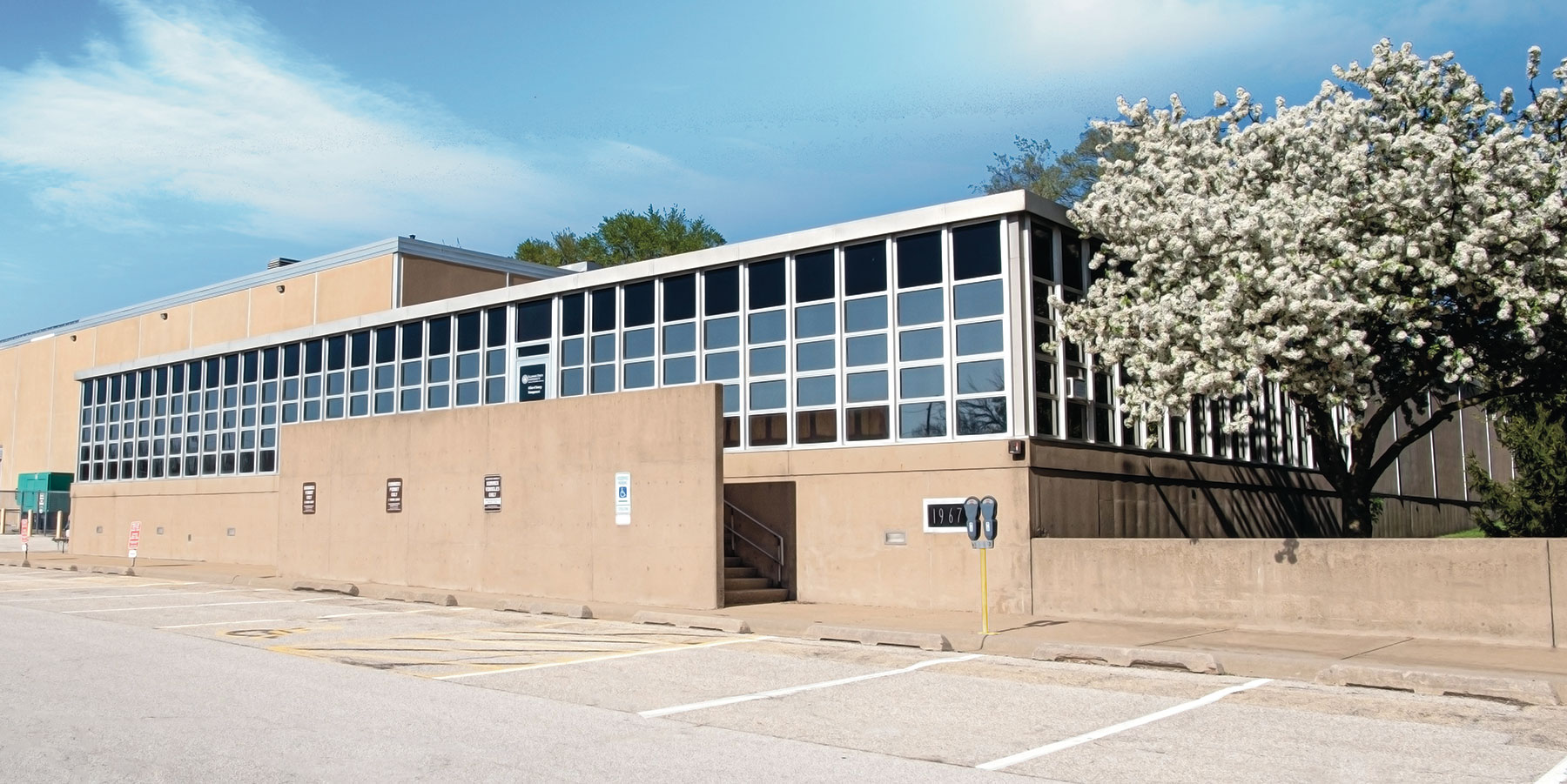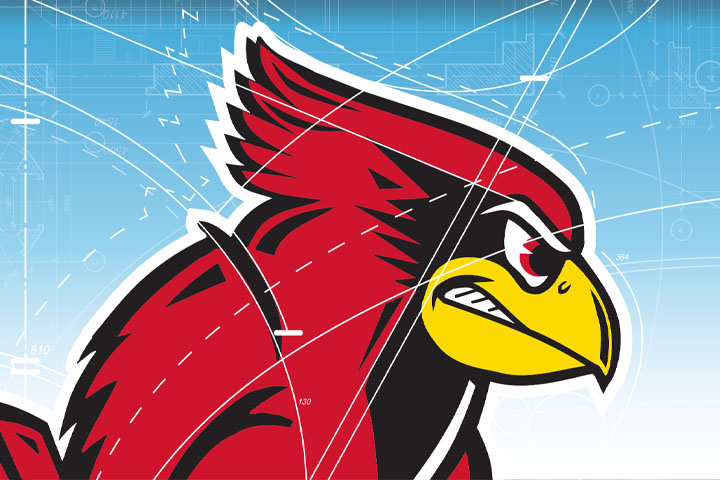History is being repeated at Illinois State University as creation of a College of Engineering advances following approval in the spring by the Illinois Board of Higher Education (IBHE) and ISU’s Board of Trustees (BOT).
The effort and energy invested by administrators in establishing what will be ISU’s seventh college mirror the motivation that drove the University’s founders in the 1800s—to help fill a professional void.
Appears InThe University evolved when the need for teachers was overwhelming. “It was estimated in 1840 that there were at least 100,000 children in Illinois who were not in school and over 28,000 adults who were illiterate,” historian Helen Marshall wrote in the Grandest of Enterprises: Illinois State Normal University 1857-1957.
Marshall further documented that rapid population growth from 1840 to 1850 created “a dearth of teachers.” The University was consequently built with the mission of preparing educators. Today the need is for more engineers, and specifically individuals from diverse backgrounds to join the field that is growing in demand.
“The vision for Illinois State University’s College of Engineering centers on meeting the national need to grow and diversify the STEM pipeline, creating more educational opportunities for historically underrepresented and underserved students to successfully enter engineering professions,” ISU President Terri Goss Kinzy said.
“The vision for Illinois State University’s College of Engineering centers on meeting the national need to grow and diversify the STEM pipeline, creating more educational opportunities for historically underrepresented and underserved students to successfully enter engineering professions.”
Dr. Terri Goss Kinzy
An internationally respected scholar for her research in biochemistry and microbiology, Kinzy knows personally and professionally of the need for expansion and inclusion in the STEM fields: science, technology, engineering, and math.
There are an estimated 192,000 engineers in the United States. Of that number, approximately 14 percent are female and 70 percent are white. Shifting the paradigm will be difficult given the future engineers in training still demonstrate disproportionally low percentages of women and underserved persons nationally.
These statistics explain why Kinzy and Provost Aondover Tarhule are excited to create a college that will be built with a unique mission. “Illinois State University will be the first institution to develop a College of Engineering that from the outset is designed to achieve equity in the recruitment, retention, and completion of historically underrepresented and underserved students,” Tarhule said, explaining the college will be built through “an equity lens.”
The college will house a Department of Electrical Engineering and a Department of Mechanical Engineering. A general engineering major will also be offered to students who will enroll at the earliest in the fall of 2025. ISU is expecting the start-up costs for the next two years prior to enrollment to be approximately $1.2 million, which will be covered by reserve funds. Student enrollment of an estimated 130 initially with more than 500 total by the fourth year will bring in revenue to cover ongoing expenses.
The IBHE put its support behind the initiative that fits with the state board’s higher education strategic plan titled “A Thriving Illinois: Higher Education Paths to Equity, Sustainability and Growth.” ISU’s Board of Trustees gave permission for planning to continue during a May 2021 meeting and voted full approval this spring for the college that will be housed in the John Green Building.
An estimated $44 million will be borrowed to fund renovations and equipment purchases needed for the college that has three foundational goals. Beyond the pledge to increase diversity in the field, ISU is committing to make certain graduates are workforce ready and that the student graduation rate exceeds the current national average of approximately 50 percent.

The John Green Building will be renovated and become home to the College of Engineering.
“Illinois State’s College of Engineering will offer an innovative, experiential, and industry-informed curriculum,” Kinzy said. “The curriculum will be designed specifically so that students will take introductory engineering courses in their first year on campus. That’s important because we want first-year students in those programs to think of themselves as engineers right from the start.”
“It’s a high bar,” Tarhule said, but one he is confident will be reached. He envisions students from across the country and globe enrolling in the college that will elevate the University’s prestige. Other disciplines will be enriched as research collaborations flourish with faculty and students in mathematics, physics, industrial technology, business, and even creative technology in the Wonsook Kim College of Fine Arts.
“The College of Engineering will bring in resources we do not have,” Tarhule said, noting the addition of a new academic option expands student enrollment opportunities as well. That is particularly critical given the high school demographic continues to shrink.
Strong job demand is one reason for confidence students will enroll. “The State of Illinois is not producing enough engineers. There are approximately 400 jobs that go unfilled annually, so we know there is a market,” Tarhule said. Consultation with corporations including Caterpillar Inc., Deere and Company, and Archer-Daniels-Midland Company as part of a workforce analysis confirmed there is a void, with the greatest need for electrical and mechanical engineers.
Illinois State is making a financial commitment of approximately $500,000 annually to provide scholarships that will total more than $2 million by the college’s fourth year. The support will empower students from low-income families to attend.
“The curriculum will be designed specifically so that students will take introductory engineering courses in their first year on campus. That’s important because we want first-year students in those programs to think of themselves as engineers right from the start.”
Dr. Terri Goss Kinzy
Students will also be appreciative of ISU’s plan that makes it easy for transfers to enter the program, as well as enriched study opportunities. The college will offer faculty research partnerships to students, internships, living and learning communities, pre-professional mentorships, and networking through organizations such as the Society of Black Engineers, the Society of Professional Hispanic Engineers, and the Society of Women Engineers.
Putting the plan into action will require the work that began under President Larry Dietz in 2016 to continue. It was then an initial feasibility study was undertaken and the Academic Senate engaged.
“The College of Engineering has been years in the making and is the result of the vision and hard work of many faculty, administrators, and students,” Kinzy said. Tarhule also credits those whose work before him led to the college becoming a reality.
When he arrived in 2020, the idea was to add an engineering program under existing departments within the College of Arts and Sciences. He encouraged establishing a College of Engineering instead and has been heavily involved in advancing the proposal through myriad steps.
“We still have a long way to go,” Tarhule said, noting the search for a dean has begun. That person will lead the hiring of departmental chairs, who will partner to build a faculty team that will develop the curriculum. The approval process for the courses will be lengthy, going through the Academic Senate, BOT, and IBHE.
Patience will not be a problem for Tarhule or Kinzy, both of whom are energized by the reality that they are involved in an academic expansion that will empower individuals to pursue their passion, bring needed change to a vital profession, and bolster the future of the University as it further evolves from the days when it was driven by the singular mission to train teachers.

